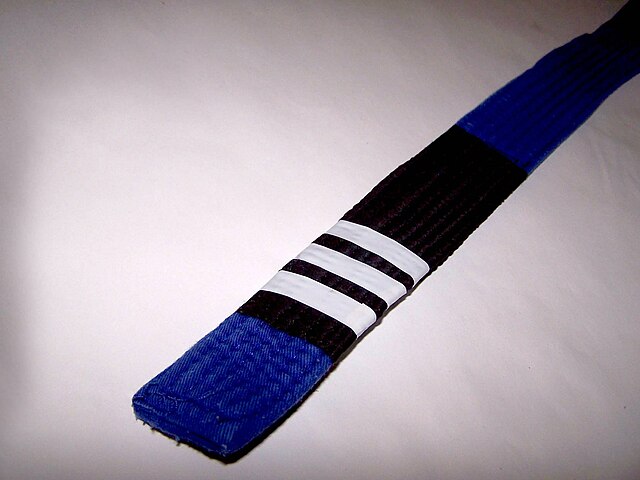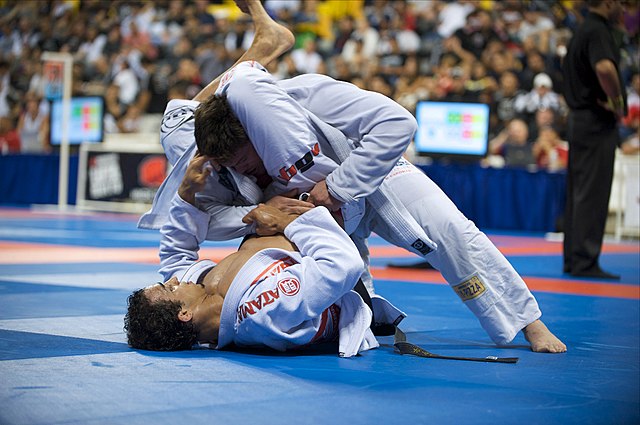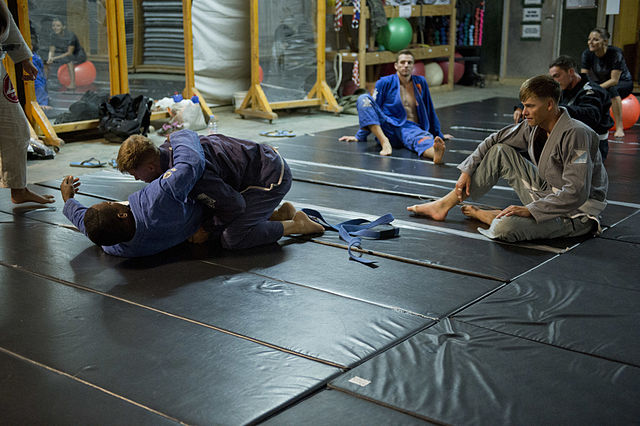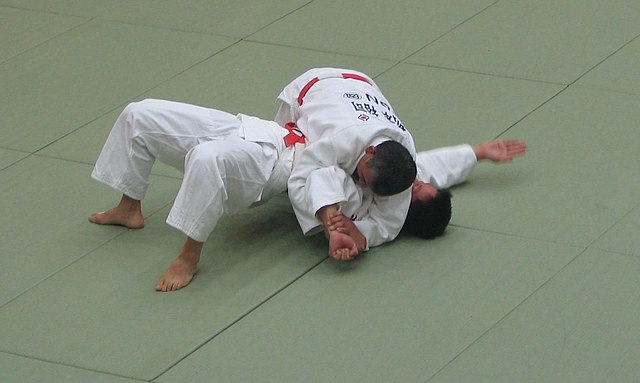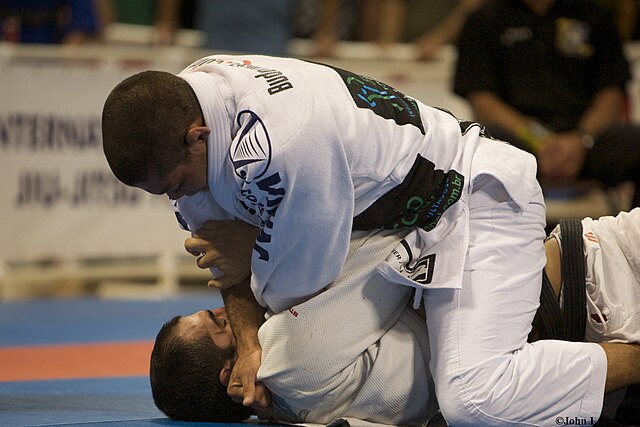Brazilian jiu-jitsu ranking system
The Brazilian jiu-jitsu ranking system signifies a practitioner's increasing level of technical knowledge and practical skill within the art. Colored belts worn as part of the uniform are awarded to the practitioner. The ranking system shares its origins with the judo belt-rank system, but the Brazilian system incorporates some minor differences from Judo such as a division between youths and adults and the issuance of stripes and degrees. Some differences have become synonymous with the art, such as a marked informality in promotional criteria, a focus on competitive demonstration of skill, and conservative promotion.
Francisco Mansor wears his 9th degree red belt.
A blue belt with three stripes.
Brazilian jiu-jitsu is a self-defence martial art and combat sport based on grappling, ground fighting, and submission holds. BJJ focuses on taking ones opponent down to the ground, gaining a dominant position, and using a number of techniques to force them into submission via joint locks or chokeholds.
Romulo Barral attempting a triangle choke on Gabriel Vella at the 2009 World Jiu-Jitsu Championship
A Brazilian jiu-jitsu instructor demonstrates how to tackle an opponent.
An Americana armlock submission from traditional side control.
Full Mount is considered one of the most dominant grappling positions.


